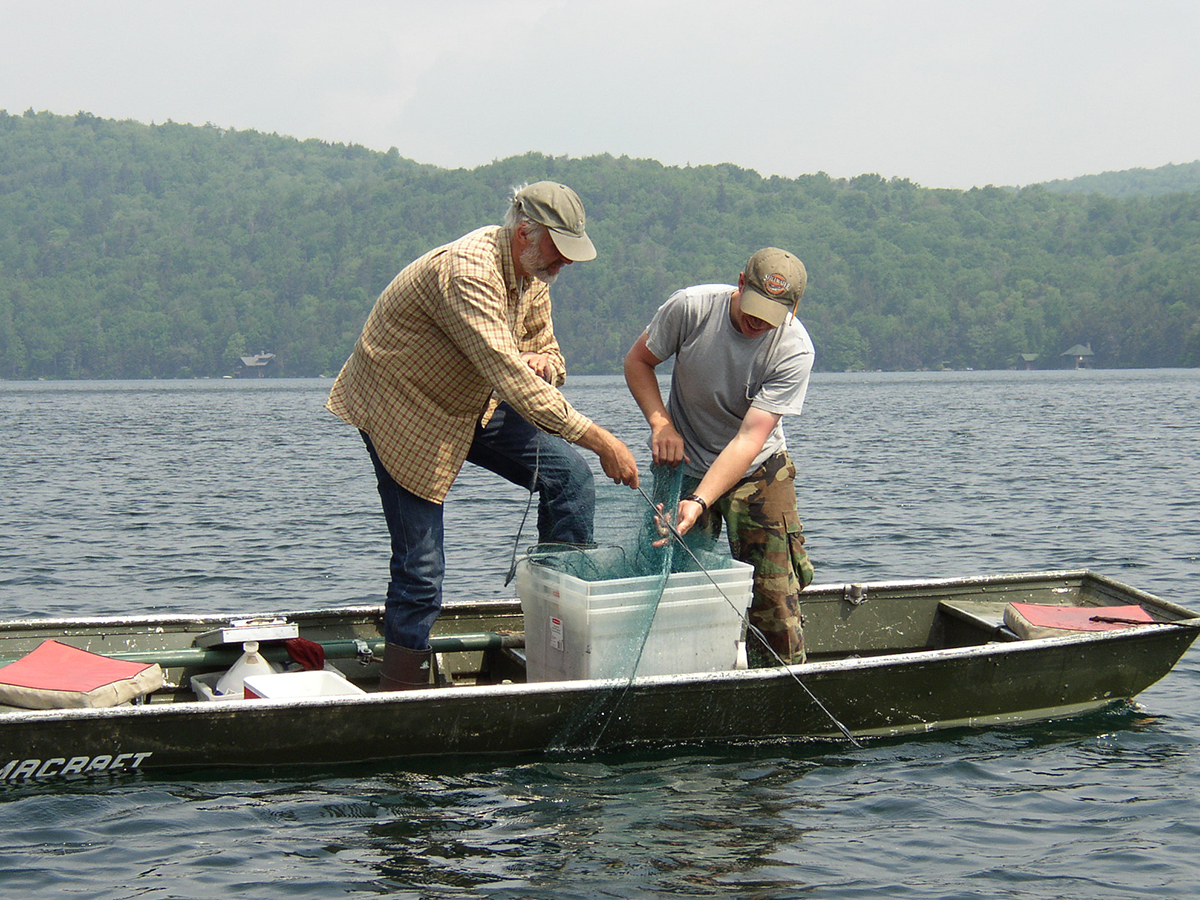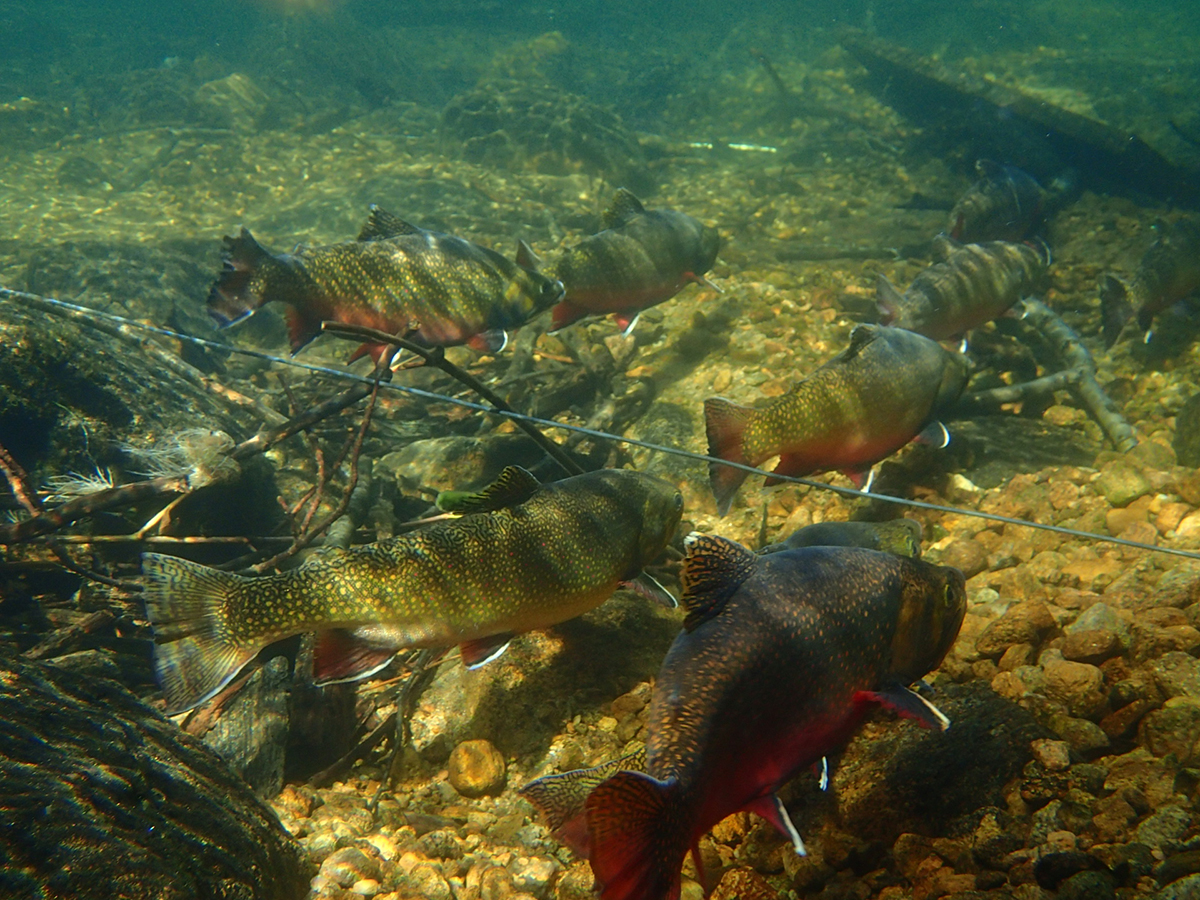Adirondack Fishery Program establishes faculty fellowship
By Krisy Gashler

Through 65 years of leadership and collaboration, Cornell has helped protect natural fisheries in the Adirondacks from acid rain, invasive species, and now, climate change.
To celebrate the milestone, and signal the university’s continued commitment to New York’s largest park, the College of Agriculture and Sciences (CALS) has established a new faculty fellowship in fisheries and aquatic sciences, named for Dwight A. Webster, the renowned professor of fishery biology who laid the groundwork for what has become the Adirondack Fishery Research Program.
The program is directed by Cliff Kraft ’75, associate professor of natural resources. A faculty member will be hired to fill the faculty fellowship, which is funded by private donors and through CALS funds.
“The Adirondacks are an excellent model for the world, actually, in having both public land and private land in the form of a park,” Kraft said. “It’s a working landscape: there’s timber harvesting, obviously there’s recreation there. In many ways, that kind of park is a more effective model than just putting a fence around a place and saying, ‘People can’t make a living there.’”
In the 1950s and '60s, when Webster began his work in the Adirondacks, it was private landowners who wanted to put up fences.
“Initially, to some extent, private land owners thought, ‘The outside world won’t bother us,’” Kraft said. “But the notion that they could manage resources on their property without being influenced by the broader world really changed when fish were dying in the 1960s and it wasn’t because of anything that was being done on their property; it was acid rain, coming from factories and power plants upwind from them.”

Webster worked with scientists from other institutions in carefully studying the causes of fish kills in the Adirondacks, with a special focus on protecting native brook trout, New York’s state fish. This work required support from a disparate group of landowners, private clubs, Nongovernmental organizations (NGOs) and state agency officials.
In the face of massive industry opposition, Webster and his public and private allies methodically demonstrated that acid rain was the culprit. Their work led the U.S. Congress in 1990 to pass amendments to the Clean Air Act, which required power plants to reduce sulfur dioxide emissions. Webster and other managers started liming lakes throughout the Adirondacks to counter acidity and restore a pH balance that enabled fish to survive.
“We’re seeing a lot of improvement, fish populations are recovering, so it’s a good news story,” Kraft said. “But there are other threats.”
One is the invasive smallmouth bass, which is not native to the Adirondacks and is outcompeting native fish populations. Cornell is working with landowners to remove smallmouth bass from some habitats.
Another is climate change. Brook trout are cold-water dwellers and the very warm summer of 2012 led to brook trout reproductive failure in some lakes, Kraft said. One major focus of the fishery program’s research now is on climate change and its impact on native fisheries.
“The Adirondacks can seem in many ways like a pristine wilderness untouched by the challenges of the modern world,” said Kathryn Boor, the Ronald P. Lynch Dean of CALS. “But keeping the waters clean and fisheries healthy require a concerted effort by dedicated scientists to take our knowledge and apply it to a public endeavor, and CALS has really stepped in to protect what is an environmental treasure here in New York.”
The fisheries program is also using DNA sequencing and bioinformatics to tease out how genetically adaptable brook trout might be coping with increasingly warm summers.
They’re also studying the movements of water itself, including groundwater inputs along lake shorelines, in hopes of finding cooler sanctuaries for brook trout during hot spells.
“A lot of the themes in our work have remained the same over the past 65 years, but now we have tools to more effectively answer the questions Dwight Webster was pondering back in the '50s and '60s,” Kraft said. “If you wanted to look at fish movement between tributaries and lakes 20 or 30 years ago, somebody had to go out with radio antennae and track one single fish. Now we can track every single fish in a lake with digital recorders. It’s an exciting time and there’s a lot to do.”
Krisy Gashler is a freelance writer for the College of Agriculture and Life Sciences.
Media Contact
Get Cornell news delivered right to your inbox.
Subscribe